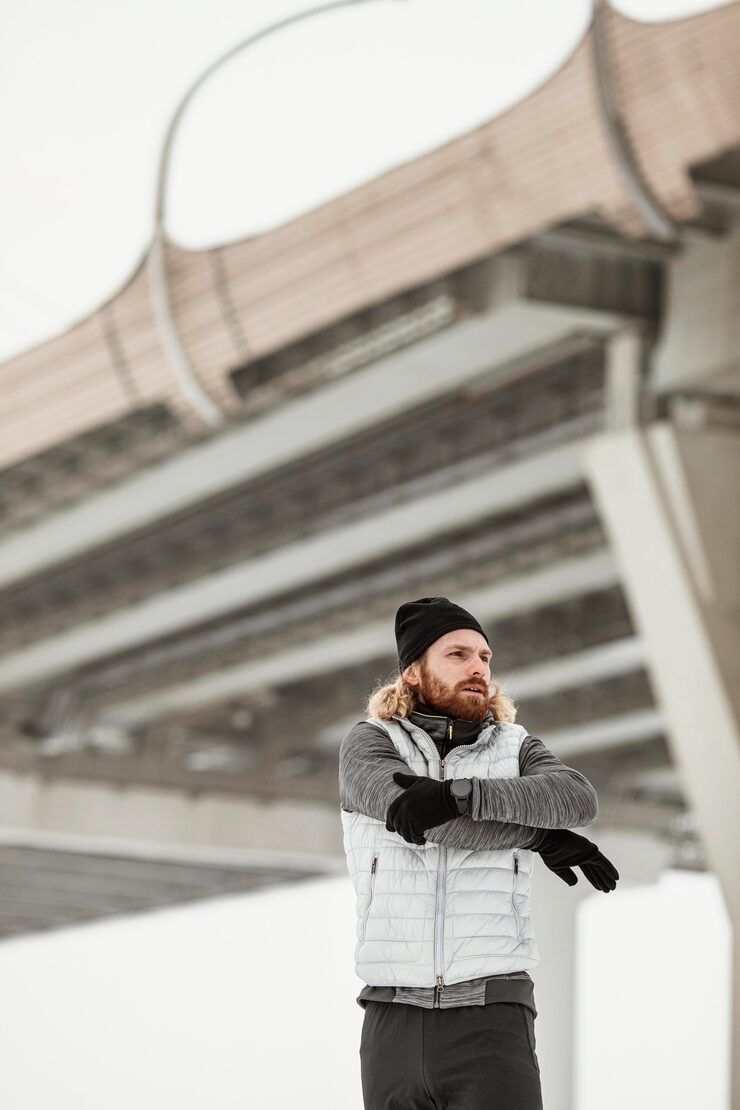Sticking to a regular workout can feel like a chore, and when the weather turns cold it’s normal for motivation to drop—whether you rarely exercise or are a dedicated fitness fan. Getting moving when temperatures dip into the single digits feels tough, but taking a few weeks off after you’ve built a routine can undo a lot of progress.
The good news is winter exercise has real perks that can help you get past that first hurdle. With fewer social distractions, winter can even be a great time to try cycling holidays at home or abroad and jump-start your fitness.

Types of winter exercise
Choose a routine that fits your life and your goals—what works for a friend or partner might not be right for you.
Aerobic exercise
These are repetitive, sustained activities that raise your heart rate—walking, hiking, cycling, and swimming. Cooler weather often makes aerobic workouts more comfortable and reduces the chance of overheating, which can make endurance training easier.
Strength training
You can build strength with bodyweight moves at home, like planks and push-ups, or with weights and machines that create resistance. In winter, indoor strength work is especially useful for keeping muscle mass when outdoor options are limited.
Flexibility
Stretching and joint mobility work—yoga or simple stretching routines—help keep muscles and joints moving freely. Doing these in the morning or before bed can reduce stiffness that comes with cold weather and support overall joint health.
Balance exercises
Balance work improves coordination and prevents falls. Try single-leg stands, heel-to-toe walks, or simple stability exercises to stay steady and confident in daily activities.
Benefits of winter exercise
Improves your mood
Exercise releases endorphins, which ease pain and stress and lift your mood. That’s especially important in winter when many people experience Seasonal Affective Disorder (SAD) from reduced daylight.
Helps you sleep
Regular physical activity helps regulate sleep. When your body gets used to more exertion, you’ll likely fall asleep faster and enjoy deeper, more restful sleep. Better sleep makes exercise feel less like a chore and more like something you want to do.
Boosts your immune system and endurance
Training in cooler weather can make your body work more efficiently, which helps build endurance for workouts year-round. It also improves circulation and can strengthen heart and lung function.
Burns more calories
In the cold, your body doesn’t need to work as hard to cool down, and exposure to low temperatures can activate brown fat, which burns calories to produce heat. You may burn more calories with less effort—but remember your body will also need more energy to stay at its best.
Nutrition matters
Exercise alone isn’t enough—good nutrition is key for a strong immune system and overall health. Include foods that support immunity, like citrus fruits, peppers, and yogurt.
Final thoughts
Staying active in winter is important, but safety matters. Check the weather before heading out and dress for the conditions—protect your hands, ears, and feet. Make sure you’re visible to cars and other people when daylight is limited.
It’s also okay to skip an outdoor session. Have a simple at-home workout ready for days when being outside isn’t safe or enjoyable.